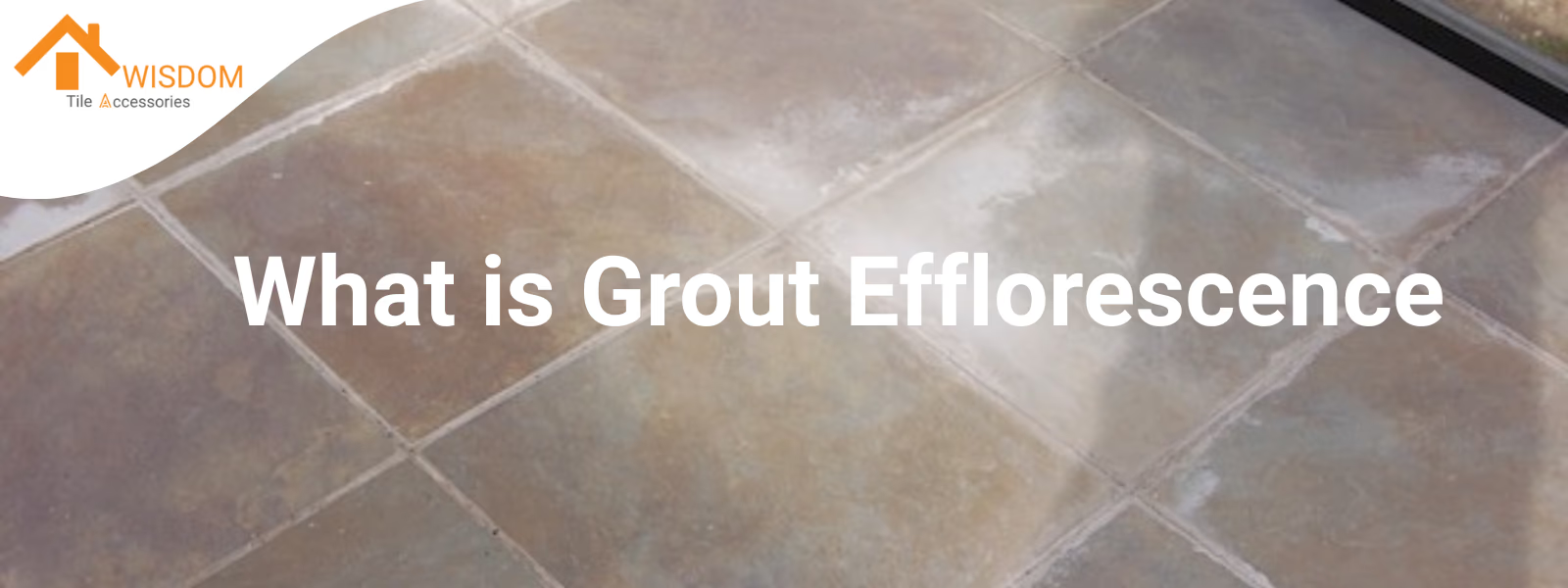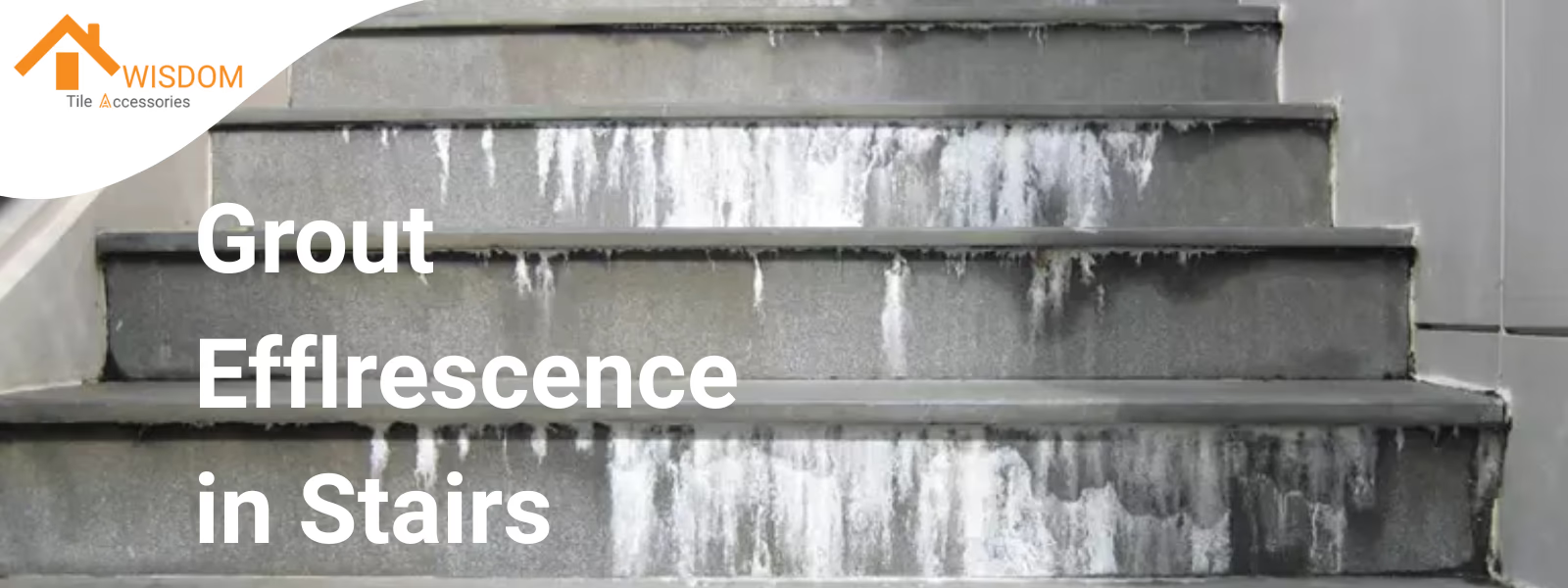That stubborn white powder on grout or masonry? It's called efflorescence, usually appearing where moisture hangs around. More than just an eyesore, it can hint at hidden water problems needing attention. Understanding what it truly is, its causes, and how to identify it correctly are vital first steps. This article dives into practical, real-world insights on grout efflorescence for both homeowners and building pros

What Exactly Constitutes Grout Efflorescence?
Essentially, grout efflorescence is a natural process where soluble salts inside building materials make their way to the surface. Think of it like materials such as grout, concrete, brick, or stone "sweating" out salts. Here’s how it works in simple terms:
- Soluble Salts are Present: Most materials made with cement (including the grout and mortars used in tiling) naturally contain salts that can dissolve in water. Salts might also come from the sand or aggregate used, or even the water mixed in during installation.
- Moisture Gets Involved: Water is the key transporter here. Whether it's from a leaky pipe, damp ground wicking upwards, condensation, rain seeping in, or simply water left over from the install, it dissolves these salts hiding inside the material.
- Salts Travel and Water Evaporates: This salty water then travels through the tiny pores within the grout or masonry, moving towards the drier surface. Once the water reaches the air, it evaporates.
- Salts Get Left Behind: As the water disappears, it leaves the dissolved salts behind. These salts then reform into crystals on the surface, creating that visible white, powdery deposit. The name "efflorescence" actually comes from a French word meaning "to flower out," which paints a good picture of how these deposits seem to bloom.
So, efflorescence is really just the visible result of water moving through a material containing salts and then evaporating. You need all three things for it to happen: the salts, enough moisture, and a way for the moisture to get to the surface and evaporate. Take away any one of these, and efflorescence won't occur.
Identifying True Efflorescence vs. Common Imposters
Knowing for sure if you're dealing with efflorescence is important. Why? Because how you clean it and what it means for your structure can be very different from other surface issues. Guessing wrong might mean wasted cleaning efforts or, worse, ignoring a moisture problem that needs fixing. Here’s what to look for with true efflorescence:
- The Look: It usually appears as a fine, powdery or sometimes crystalline layer right on the surface. It's almost always white, though sometimes it might look a bit yellowish or grey depending on the salts. It generally looks dry and dusty.
- The Feel: When dry, true efflorescence is typically soft. You can often just brush it off with your finger or a dry cloth. It doesn't usually form a hard, stubborn crust.
But watch out, several other things often get mistaken for efflorescence:
- Latex Leeching (or Migration): This is a frequent look-alike, especially with newer grouts and mortars that have polymers added. Too much water during mixing or cleanup, or moisture traveling through the installation, can carry these additives to the surface. Unlike efflorescence, this stuff dries hard, sometimes looking a bit shiny or like a clearish-white film. It's usually tough to just wipe off and might need special cleaners the grout manufacturer recommends. (Making this distinction is crucial, as we see in many real-world troubleshooting cases).
- Hard Water Stains (Limescale): These are hard, crusty build-ups from water with lots of minerals (like calcium and magnesium) evaporating, not from salts inside the building material. You often find limescale where water constantly drips or sits, like near taps, showerheads, or along the water line in wet areas. You usually need something acidic to clean it off.
- Soap Scum: Mostly seen in showers, this is what happens when soap reacts with hard water minerals. It tends to look like a dull, sometimes waxy film, not like powder or crystals. Regular bathroom cleaners usually handle it.
- Mold or Mildew: These are living things, often showing up as black, green, or pinkish spots or patches. They might look fuzzy or feel a bit slimy when wet. While moisture is also the culprit here, you need fungicides or bleach-based cleaners to kill them and then tackle the dampness and airflow issues.
The main trick is to pay attention to the texture. Soft and powdery? Probably efflorescence. Hard, filmy, or looks alive? It’s time to consider these other possibilities before you start cleaning. Getting the ID right means you'll use the right cleaning approach and focus your efforts on solving the real underlying problem.

Unpacking the Root Causes in Real-World Scenarios
Okay, so we know efflorescence involves salts, water, and evaporation. But to really get a handle on preventing or fixing it, we need to dig into where these elements actually come from in typical building situations. It's rarely just one single thing, but usually a combination of factors creating the perfect conditions for that white powder to appear.
Tracing the Soluble Salts Within Building Materials
Where do these troublesome salts originate? They're surprisingly common:
- Cement Itself: Portland cement, the fundamental binder in most grouts, mortars, and concrete, naturally contains varying amounts of soluble alkali salts (like sodium and potassium sulfates). This is often the primary source.
- Aggregates: The sand and gravel used in concrete mixes or mortar beds can sometimes contain salts, especially if sourced from areas with naturally high salt content or if contaminated during storage or transport.
- Mix Water: Water used for mixing grout or concrete, particularly hard water with high mineral content, can introduce additional soluble salts into the system right from the start.
- Adjacent Materials: Salts can also migrate from surrounding materials. Think of soil behind a basement wall, de-icing salts used near an exterior patio, or even certain types of brick or stone masonry adjacent to the grout.
While you can't usually eliminate salts entirely when using cement-based products, understanding their potential sources helps in selecting materials wisely and diagnosing problems later.
How Moisture Becomes the Efflorescence Trigger
Moisture is the engine driving efflorescence. Without it, the salts stay locked harmlessly within the material. The real challenge often lies in figuring out exactly how water is getting into the system, especially since the source might be hidden or intermittent. Common culprits include:
- Leaks: Obvious ones like plumbing leaks (supply lines, drains, shower valves) are frequent offenders. Less obvious but equally damaging are hidden leaks higher up in the structure. For instance, it's not uncommon for the source of moisture to be quite distant from where the efflorescence appears. A classic example is faulty flashing on a roof or parapet wall allowing rainwater ingress; this water might then migrate down through the structure and cause efflorescence on a tiled wall section below, even if that section is seemingly protected from direct rain. These kinds of indirect moisture pathways highlight the importance of thorough investigation.
- Groundwater Wicking: Concrete slabs or basement walls directly in contact with damp soil can continuously wick moisture upwards through capillary action. This is a very common cause of efflorescence on basement floors and lower walls, especially if a proper vapor barrier wasn't installed beneath the slab.
- Condensation: In areas with high humidity and poor ventilation (like bathrooms or poorly insulated exterior walls), water vapor can condense within the wall cavity or on cool surfaces, providing the necessary moisture.
- Installation Water: Water used during the mixing and installation of grout, mortar, or concrete needs time to evaporate. If the area is enclosed too quickly or conditions aren't right for drying, this residual moisture can activate the salts.
- Poor Drainage: Inadequate slope on patios, balconies, or shower floors can lead to standing water (ponding or "birdbaths"), allowing prolonged water absorption into the grout and setting bed.
Finding the exact moisture pathway is often the most critical part of solving a persistent efflorescence problem – it truly requires some detective work.
Evaporation and Porosity: The Salt Delivery Mechanism
So, salts are present, and moisture gets in. The final piece of the puzzle is how these salts reach the surface. This depends on two factors:
- Porosity: Grout, concrete, and masonry are inherently porous materials, meaning they contain a network of tiny interconnected voids. These pores act like microscopic pathways or straws, allowing the salt-laden water to travel. The more porous the material, generally the easier it is for water (and salts) to move through it.
- Evaporation: Efflorescence forms where the water evaporates. This is usually on the exposed surface. Importantly, evaporation tends to happen more readily from certain areas – perhaps warmer spots, areas with more air movement, or simply the path of least resistance for the moisture. This explains why you might see efflorescence concentrated in specific patches or along certain grout lines, even if the moisture source affects a wider area underneath. The location of the efflorescence often gives clues about where the moisture is coming from and exiting the system.
Understanding these three components – where the salts come from, how the water gets in, and how it gets out – provides the foundation for developing effective prevention strategies.
Critical Prevention Strategies That Actually Work
The old saying "an ounce of prevention is worth a pound of cure" couldn't be more true for grout efflorescence. Dealing with it after the fact can be frustrating and sometimes requires significant rework. Building practices that minimize one or more of the three key ingredients (salts, water, evaporation path) are the most effective approach. Here are critical strategies that make a real difference:
Selecting the Right Materials to Minimize Risk Upfront
While you can't eliminate salts entirely from cement products, making informed choices can help:
- Use Low-Alkali Cement: Where possible, specifying or using Portland cement manufactured to have lower alkali content (often designated as Type II or Type V in some regions, though consult local standards) can reduce the initial salt load.
- Consider Grout Types: While standard cementitious grouts are most common, be aware of their potential for efflorescence. For critical areas prone to moisture, alternatives like epoxy grout or certain high-performance cementitious grouts formulated to resist efflorescence might be considered, though they have different application requirements and costs. Always follow the manufacturer's recommendations.
- Test Suspicious Materials: If using local aggregates or water sources in sensitive projects where efflorescence is a major concern, testing them for soluble salt content might be warranted.
Preparing the Substrate Correctly is Non-Negotiable
The surface beneath the tile and grout plays a massive role in moisture management. Getting this wrong is asking for trouble:
- Ensure Proper Slope: For any surface expected to get wet (shower floors, balconies, patios, even general floors needing wash-downs), positive slope towards drains is essential. Typically a minimum of 1/4 inch per foot (approx. 2%) is recommended to prevent water pooling.
- Install Vapor Barriers/Retarders: Under concrete slabs on grade (in contact with the ground), a continuous, properly installed vapor barrier is crucial to stop ground moisture from wicking up into the slab and subsequently into the tile installation.
- Use Appropriate Backer Boards: In wet areas like showers, use moisture-resistant or waterproof backer boards (e.g., cement board, coated foam boards) instead of standard drywall or green board, which can degrade and hold moisture.
Applying Effective Waterproofing Techniques, Especially in Wet Zones
In areas guaranteed to see significant water exposure, a dedicated waterproofing layer beneath the tile assembly is often the best defense against water reaching the setting bed and substrate:
- Choose the Right System: Options include liquid-applied membranes (painted or rolled on) or sheet membranes. The best choice depends on the application and substrate.
- Detailing is Key: Proper waterproofing isn't just about the flat surfaces. It requires meticulous attention to detail at corners, seams, drains (ensuring weep holes are clear!), and where different materials meet (e.g., tub flanges, thresholds). This is where failures often occur. Follow manufacturer instructions precisely for overlaps, flashing, and sealing penetrations.
Proper Grout Installation and Curing Methods Matter Greatly
Even with the right materials and prep, how the grout is mixed and applied can impact its porosity and performance:
- Follow Mix Ratios Exactly: Adding too much water to the grout mix might make it easier to spread initially, but it weakens the final product, increases porosity, can cause shrinkage cracking, and may even lead to issues like latex leeching (that hard white residue we discussed). Always use the precise amount of water specified by the manufacturer.
- Ensure Full Joints: Pack the grout firmly into the joints, ensuring there are no voids or low spots where water can collect.
- Cure Correctly: Allow the grout to cure properly according to the manufacturer's guidelines before exposing it to heavy water use or aggressive cleaning. Protect it from drying too quickly in hot, dry conditions or getting saturated by rain shortly after installation. Initial damp curing might be required for some products to achieve full strength and density.
Controlling On-Site Moisture During the Construction Phase
Efflorescence risk can be reduced by managing moisture during the building process itself:
- Protect Materials: Keep bags of grout, cement, and sand dry before use. Protect newly installed work from rain or excessive water exposure.
- Allow Drying Time: Ensure concrete substrates have adequately cured and dried before installing tile. Trapping construction moisture under a tile installation is a common recipe for problems.
- Ventilation: Provide adequate ventilation during and after installation to help dissipate moisture from the curing materials.
- Careful Cleanup: Avoid using excessive amounts of water for cleaning the grout off the tile surface, as this water can saturate the freshly installed grout.
Implementing these strategies requires a coordinated effort and attention to detail throughout the design and construction process. While no single step guarantees zero efflorescence, employing multiple layers of defense significantly reduces the risk.

Tackling Existing Grout Efflorescence Like a Pro
Alright, so that powdery white stuff has made an unwelcome appearance on your grout or tile. Maybe prevention wasn't possible, or perhaps it's an older installation showing its age. Whatever the reason, now you've got to deal with it. Just scrubbing away at efflorescence without tackling the root cause is like playing whack-a-mole – frustrating and ultimately ineffective. Let's walk through a more strategic approach, the way seasoned professionals handle it.
First Steps: Assessing and Safely Cleaning Existing Build-Up
Before you reach for the nearest bottle of cleaner, let's make sure we're actually dealing with efflorescence. Ask yourself: is it that characteristic soft, powdery stuff you can often just brush away? If you're seeing a hard crust, a filmy residue, or something that looks suspiciously alive (hello, mold!), circle back to our earlier chat about "Common Imposters." Using the wrong cleaning method for limescale or latex leeching won't get you very far.
Confirmed it's efflorescence? Good. Now, start simple and safe with cleaning:
- Try Dry Methods First: Often, the best initial move is the least invasive. Grab a stiff nylon brush (steer clear of wire brushes – they can gouge your grout and tile) and give the dry powder a good brushing. Vacuum up the dust thoroughly. The beauty of this is you're not adding any extra moisture to the situation.
- Plain Water Rinse: If dry brushing leaves residue behind, try scrubbing the area with the nylon brush and clean water. Sometimes, this is enough to dissolve and wash away the surface salts. Let it dry completely and keep an eye on it – does the powder creep back?
- Specialized Efflorescence Removers (Use with Care): If water alone isn't cutting it, cleaners specifically designed for efflorescence, usually containing a mild acid like sulfamic acid, might be needed. But tread carefully here:
- Test, Test, Test! Seriously, find an out-of-the-way spot – a corner, behind an appliance, a leftover tile – and test the cleaner first. You need to be sure it won’t bleach your colored grout, etch your natural stone, or dull your tile finish.
- Follow the Label: Read and follow the manufacturer's instructions to the letter – dilution, how long to leave it on, how to rinse, all of it.
- Ventilate and Protect Yourself: Open windows, use gloves, wear eye protection. These cleaners might be mild, but they still demand respect.
- Neutralize & Rinse Thoroughly: This is crucial. Most acidic cleaners need to be completely neutralized and rinsed away (check the product label – often with lots of clean water, sometimes a baking soda solution is recommended). Leaving acid residues can cause ongoing damage.
- Avoid Harsh Acids: Resist the temptation to jump to strong acids like muriatic acid unless you're a professional tackling a very specific, stubborn problem on a known compatible surface. The risk of permanent damage is just too high for most situations.
And remember the golden rule: cleaning only tackles the symptom. If the unholy trinity of salts, moisture, and an evaporation path still exists, that white powder will be back. Cleaning is just clearing the decks for the real work.
The Detective Work: Investigating to Find the Hidden Moisture Source
This is where the real challenge – and the real solution – lies. Finding out where the water is coming from often takes patience and keen observation. Put on your detective hat:
- Map the Crime Scene: Where does the efflorescence show up most? Is it random, or concentrated near pipes, windows, corners, or expansion joints? Does it flare up after a heavy rain, when humidity spikes, or after you've used the shower? These patterns are your first clues.
- Examine Obvious Suspects: Get up close and personal. Look for cracked grout, sealant pulling away from tubs or thresholds, damp patches under sinks or on ceilings, exterior ground sloping towards the house instead of away. Are gutters overflowing or downspouts disconnected?
- Connect the Dots: Did this start happening after something changed? A plumbing job, new landscaping, heavy storms, even laying down new flooring over an old concrete slab? Sometimes the trigger event is revealing.
- Bring in the Tech (Optional): A moisture meter (either the pin type or non-invasive) can be a great ally, helping you map out hidden dampness in walls or floors and potentially trace it back towards the source.
- Call for Backup: If you're stumped, don't hesitate to bring in the cavalry. Professional leak detection services or building envelope specialists have tools like thermal cameras and acoustic listeners, plus the experience to unravel complex moisture mysteries.
Whatever you do, don't skimp on this investigation phase. Identifying and fixing the moisture source is the only path to a lasting solution.
Troubleshooting Common Issues in Showers and Bathrooms
Bathrooms are ground zero for moisture problems, making them efflorescence hotspots. Keep an eye out for:
- Hidden Plumbing Leaks: Shower valves hidden in the wall, slow drips from supply lines, or cracks in drainpipes are usual suspects.
- Shower Base Failures: In traditional setups, a cracked mortar bed, a hole poked in the waterproof liner underneath, or a poorly sealed drain assembly can let water saturate the base.
- Blocked Weep Holes: Those tiny but vital holes around the drain base in a mortar bed system? If they get plugged with grout or gunk, moisture trapped in the bed has nowhere to go.
- Flat Spots: Shower floors need a consistent slope to the drain. Any low spots become puddles ("birdbaths"), letting water sit and soak in.
- Porous Surfaces & Bad Seals: Water finding its way through porous grout, or sneaking in through cracked or missing sealant at joints and fixtures.
Diagnosing Efflorescence Problems Below Grade and in Basements
Basements battle moisture from below and around:
- Water Pressure from Outside (Hydrostatic Pressure): Saturated soil pushing against foundation walls can literally force water through porous concrete or blockwork.
- Wicking from the Ground: Damp soil means moisture can travel upwards into slabs and walls like a sponge – especially likely if there's no effective vapor barrier underneath the concrete.
- Foundation Flaws: Cracks in walls or floors offer easy entry points for water.
- Airborne Moisture (Condensation): Humid basement air hitting cool foundation walls or pipes can condense into liquid water.
- Inside Sources: Don't forget leaks from plumbing or appliances located within the basement itself.
Addressing Efflorescence on Exterior Walls and Patios
Outside, installations face weather and environmental factors:
- Direct Rain Exposure: Water penetrating porous brick/block, cracked mortar, or getting behind siding or cladding due to poor flashing around windows, doors, or roof intersections. Sometimes, issues higher up (like bad coping caps on a parapet wall) cause problems way down below.
- Ground Moisture (Rising Damp): Similar to basements, moisture wicking up from the ground into the base of walls or patio slabs.
- Poor Surface Drainage: Patios or walkways that trap water or slope back towards the building are asking for trouble.
- Landscaping Issues: Sprinkler systems constantly soaking a wall, or garden beds piled high against the foundation.
- Winter Woes: De-icing salts used nearby can get absorbed and reappear as efflorescence later.
Implementing Lasting Solutions to Fix the Root Cause
Once your detective work fingers the culprit, the real fix is addressing that source. This isn't about cleaning; it's about repair and prevention:
- Fix the Leaks: Repairing pipes, valves, drains, roofs, flashing – whatever is letting water in.
- Manage Water Flow: Re-grading soil, installing French drains, ensuring gutters work properly.
- Seal the Cracks: Repairing structural cracks, replacing degraded sealant at joints.
- Block the Vapor (If Possible): Installing or repairing vapor barriers (often difficult post-construction, but crucial where feasible).
- Breathe Easy: Improving ventilation in damp areas like basements and bathrooms.
- Waterproof Properly: Applying appropriate waterproofing membranes or coatings during repairs.
There's no shortcut here. Fixing the underlying moisture problem is the only way to break the efflorescence cycle for good.
Managing Persistent Efflorescence When Full Prevention Fails
Let's be realistic. Sometimes, completely eliminating the moisture source just isn't in the cards. Maybe the source is buried deep in the foundation, repairs are prohibitively expensive, or you're dealing with a historic structure where major intervention isn't an option. In these tough cases, the game shifts from elimination to management.
Dealing with Situations Where the Cause Seems Unfixable
Step one is acknowledging the reality. You might be looking at ongoing maintenance rather than a one-time fix. The goal becomes minimizing the visual impact and preventing secondary damage (like salts damaging sensitive stone). This likely means sticking to a routine of dry brushing or light cleaning as the efflorescence reappears.
Using Sealers and Coatings Effectively for Containment
This is where people often think of sealers. But proceed with caution – using the wrong type can backfire spectacularly. Here’s the lowdown:
- Breathable Penetrating Sealers (Think Silanes, Siloxanes): These soak into the grout or masonry pores and make them water-repellent without completely sealing them off.
- The Upside: They can help shed surface water (like rain or wash water) while still allowing trapped moisture vapor to escape. This breathability is key – you don't want to trap moisture inside. They usually don't change the look much, maybe a slight darkening.
- The Downside: They won't stop water being pushed through by significant pressure from behind. They wear out over time and need reapplication. And they don't eliminate the salts already there.
- Surface Coatings (Epoxies, Urethanes, Acrylics, including Epoxy Grout Colorants): These create a film on top of the surface.
- The Upside: They can block surface water well and physically hide existing efflorescence (especially colorants). Some are tough.
- The Big Risk: If moisture is still coming from behind or below (through the slab, up the wall), these non-breathable or low-breathability coatings can trap it. This is bad news. Trapped moisture can cause the coating to bubble and peel, concentrate salts underneath leading to surface damage (spalling), or even loosen tiles if the setting bed gets waterlogged.
- When to Consider (Carefully): Surface coatings are generally only a safe bet if you're very sure the underlying moisture issue is minimal or truly fixed. Using an epoxy colorant might hide the problem for a while, but if moisture is still active underneath, you could be creating bigger problems down the road.
Key Rules for Sealers/Coatings: Always start with a clean, dry, efflorescence-free surface. Always test in a hidden spot first. Read and follow the manufacturer’s instructions religiously. When in doubt, especially with persistent issues, talk to the sealant manufacturer or a building restoration expert. Trying to contain efflorescence is a compromise, and the wrong choice can definitely make things worse.


